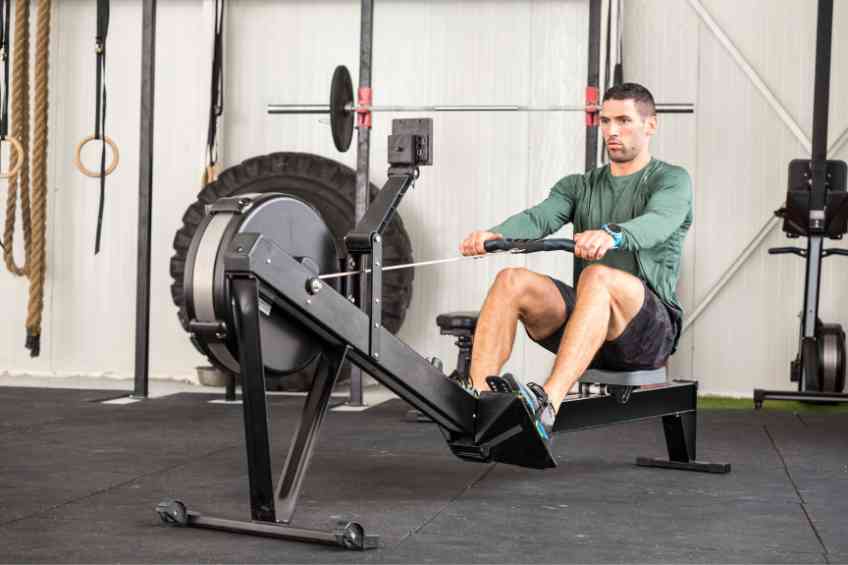By Sean Zucker —
It’s official—rowing machines are making a comeback. While the exercise tool has more recently felt like the red-headed stepchild next to bikes and treadmills, it’s currently regaining popularity. The Sports and Fitness Industry Association report that the number of people using the old school equipment grew by nearly 20 percent from 2014 to 2021. Thanks to the rowing machine’s function as a full-body workout at home, experts boast about the potential muscle gains.
For the non-gym rats, a rowing machine features a grounded seat connected to a large wheel by a chain. The faster a user pulls the chain handle—or rows—the faster the wheel spins through the air creating resistance. Of course, more resistance means a better workout. But regardless of intensity, rowing machines work a slew of muscle groups.
“Using a rowing machine has many benefits and makes for a super versatile workout. It’s low impact, meaning it’s accessible to a wide range of people, from those just starting on their journey to those getting back into fitness after a break,” performance coach Matt Jones told Live Science.
According to the health site, there are four main stages of a rowing workout on different body parts. The starting position is the catch, in which the rower will have their arms and core activated to maintain upright while sitting. Here, the glutes, hamstrings, and triceps are all also engaged. Then there’s the drive stage that involves one pushing their legs out and pulling the handle inwards. This action is the most explosive and helps build the bicep, back, hamstring, and glute muscles.
When a person fully extends with abdominals braced and glutes squeezed, they’re in the finish position. Then when they release back toward the initial catch position, they’re in the recovery stage. This section focuses heavily on the hamstrings and triceps. Jones recommends adding short bursts of weight training throughout sets to increase intensity and resistance. Additionally, most modern rowing machines feature options for increasing strength levels to build up to and pass.
Plus, the entire process is great for heart health. “What’s unique about it is that it combines the two fundamental stresses that the heart responds to, which are pressure and volume.” Dr. Aaron Baggish, a professor of medicine at the University of Lausanne in Switzerland and the director of the Cardiovascular Performance Program at Massachusetts General Hospital, told The New York Times.
Best of all, it’s super accessible and easy to add to a routine. “It’s achievable even by people going to the gym and just [rowing] a couple of times a week,” Dr. Baggish adds.
Naturally, the big league at-home exercise companies have taken notice of the machine’s versatility—namely, Peloton. The brand that saw a boom during the pandemic with its interactive stationary bikes has recently expanded to include rowing machines. Beyond that, they’ve even developed programs and classes specific to the trendy equipment. But the all-in-one app route isn’t the only way to enjoy this wide-reaching exercise. Less expensive options are available, and paid classes aren’t necessary, row and repeat.












